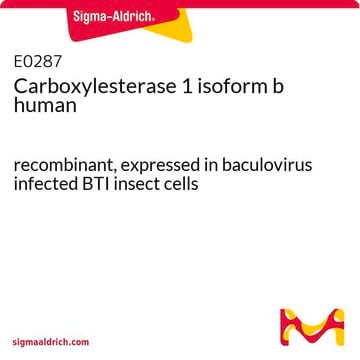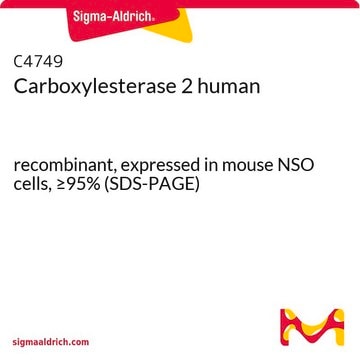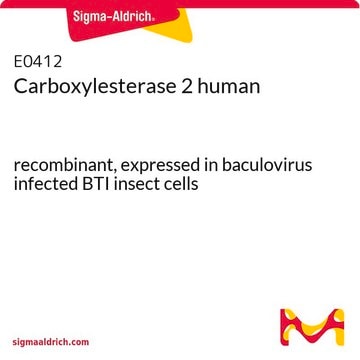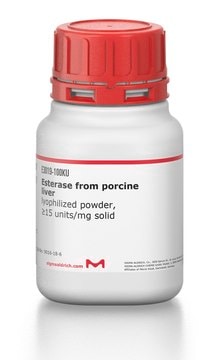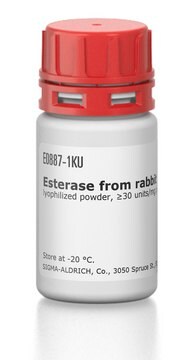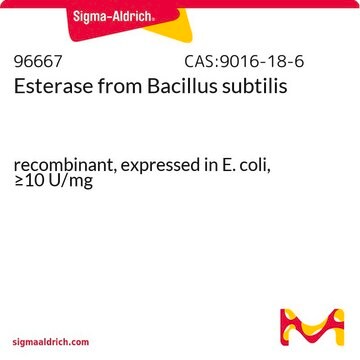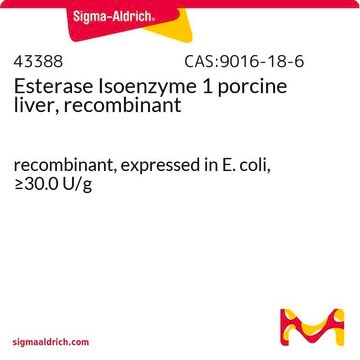E0162
Carboxylesterase 1 isoform c human
recombinant, expressed in baculovirus infected BTI insect cells
Sinónimos:
Carboxylesterase 1 human, carboxylesterase, esterase
Seleccione un Tamaño
$498.00
Fecha estimada de envío09 de abril de 2025DesdeSAINT LOUIS
Seleccione un Tamaño
About This Item
$498.00
Fecha estimada de envío09 de abril de 2025DesdeSAINT LOUIS
Productos recomendados
recombinante
expressed in baculovirus infected BTI insect cells
Nivel de calidad
Formulario
liquid
concentración
≥0.3 mg/mL
Condiciones de envío
dry ice
temp. de almacenamiento
−70°C
¿Está buscando productos similares? Visita Guía de comparación de productos
Descripción general
Aplicación
Acciones bioquímicas o fisiológicas
Propiedades físicas
Definición de unidad
Palabra de señalización
Danger
Frases de peligro
Consejos de prudencia
Clasificaciones de peligro
Resp. Sens. 1
Código de clase de almacenamiento
11 - Combustible Solids
Clase de riesgo para el agua (WGK)
WGK 1
Punto de inflamabilidad (°F)
Not applicable
Punto de inflamabilidad (°C)
Not applicable
Elija entre una de las versiones más recientes:
Certificados de análisis (COA)
¿No ve la versión correcta?
Si necesita una versión concreta, puede buscar un certificado específico por el número de lote.
¿Ya tiene este producto?
Encuentre la documentación para los productos que ha comprado recientemente en la Biblioteca de documentos.
Los clientes también vieron
Active Filters
Nuestro equipo de científicos tiene experiencia en todas las áreas de investigación: Ciencias de la vida, Ciencia de los materiales, Síntesis química, Cromatografía, Analítica y muchas otras.
Póngase en contacto con el Servicio técnico